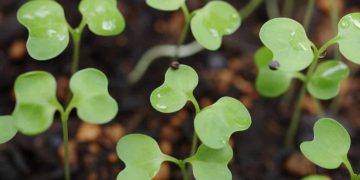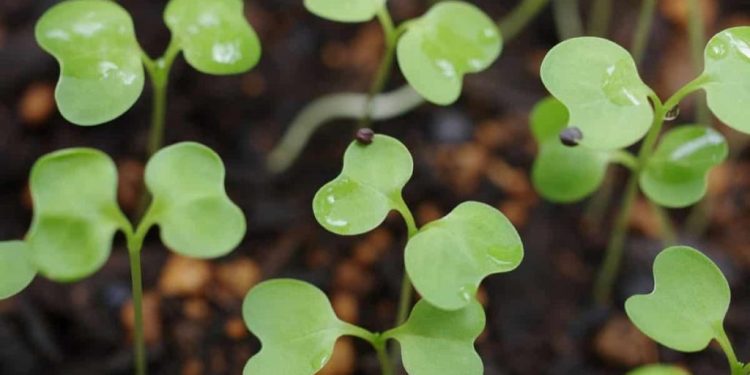Good quality vegetable seeds are the most important input in agriculture. Seed treatment, in broad terms, is the application of biological, physical, and chemical agents and techniques to seed that protect seeds and plants and improve the establishment of healthy crops. However, if not properly managed, diseases and pests affecting crops can have devastating consequences in agricultural and horticultural production. Let’s check out the methods of vegetable seed treatment below.
What is the meaning of seed treatment?
- Seed treatments are biological, physical, and chemical agents and techniques applied to seeds to protect and improve healthy crops’ establishment.
- It refers to the fungicide, insecticide application, or a combination of both to disinfect and sterilize them from seed-borne or soil-borne pathogenic organisms and storage pests. It also refers to the exposure of seeds to solar energy, immersion in conditioned water, etc.
- It helps improve crop protection, resulting in the excellent establishment of healthy and strong plants and better yields. The benefit of seed treatment is to increase germination and ensure uniform seedling emergence. In addition, it protects seeds and plants from early season diseases and insects, improving crop growth and development.
- Overall, seed treatment improves plant population and thus higher productivity. According to an estimate, 80% of seeds in our country are not treated, whereas, in developed countries, 100% of seed treatment is practiced. Seed treatment also protects emerging plants from sucking insects.
What is the advantage of seed treatment?
Seed treatment protects seeds from pests and diseases – One of the most important benefits of seed treatment is the additional protection it provides to the seeds. During the early stages of development, it is important that the seeds are not susceptible to diseases or pests, or they will fail to germinate. Untreated seeds also have the potential to spread plant diseases that can be prevented if treated to improve their immunity.
Seed treatment controls soil pests – Seed treatment benefits the seeds and the soil. It can control soil pests and add essential nutrients and valuable microorganisms to help plant growth.
Seed treatment improves germination – Seed germination depends on various factors, but seed treatment can improve the chances of germination. Since the seed treatment is applied uniformly to all the seeds, it can promote uniform crop germination. The seed treatment formulations are specific and safe for crops and were designed to avoid any possible harm such as delayed germination or irregular emergence and phytotoxic effect compared to other formulations unsuitable for field use.
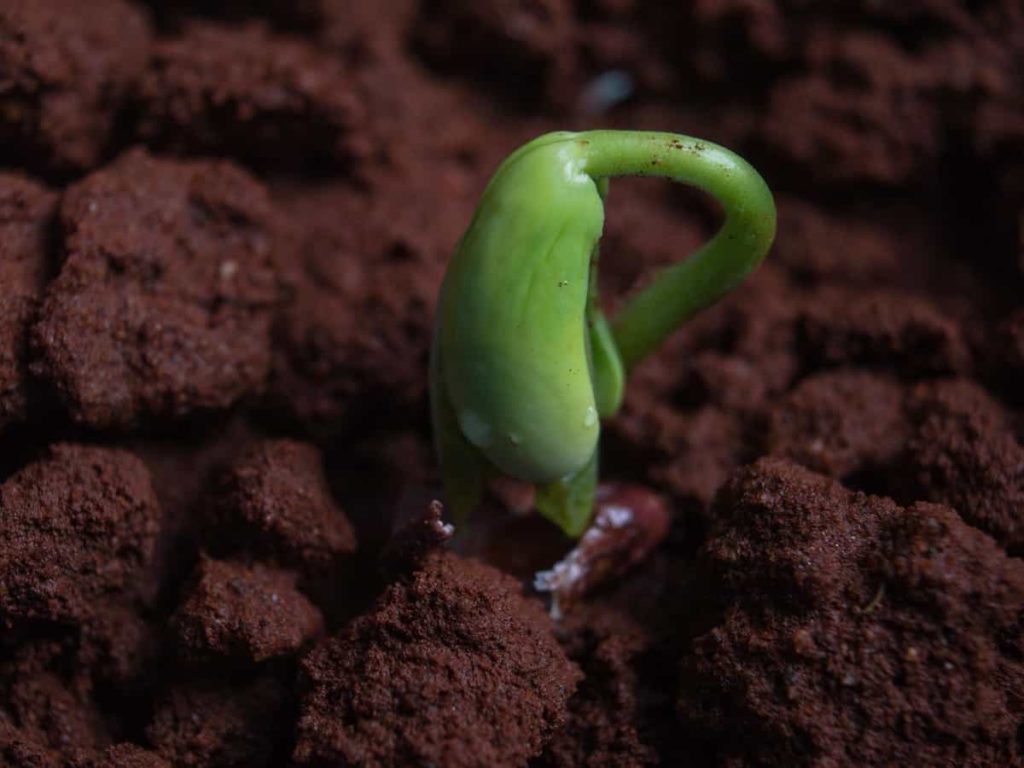
How does seed treatment work?
- Seed treatment is a biological organism, colorant, nutrient, or chemical applied directly to the seed that helps control any pests that attack the seeds, and plants, thereby improving overall crop performance.
- Quality seed is an important crop production input. Seed treatment is a simple method of managing pest incidence in crop production. In addition, it serves purposes such as ease of sowing, breaking dormancy, hardening the seed, increasing nitrogen fixation, and solubilizing phosphorus.
- Maintaining seed quality depends on many environmental factors: moisture, temperature, humidity, and storage conditions. However, even if these factors are properly accounted for, seed quality can still be destroyed by some seed-borne diseases, insects, and other pests.
Different methods of vegetable seed treatment
- Dry treatment: Mixing the seed with pesticides or nutrients in powder form.
- Wet treatment: Soak seeds in liquid form of pesticide/nutrient solution.
- Slurry treatment: Seeds/plants are dipped in slurry. Treatment of seed with liquids or liquid solutions. The slurry is prepared by mixing chemicals with water. The required amount of chemical is automatically added to the specified quantity of seed before bagging. Dipping seeds/plants in slurry, e.g., rice seeds are dipped in phosphate slurry.
- Seed dressing: The most common method of seed treatment. The seed is either prepared with a dry formulation or wet treated with a slurry or liquid formulation. The application of dressing is both farm and industrial.
- Dust treatment: Seed treatment with the powdered form of fungicides.
- Pelleting: Pelleting is a deterrent against soil organisms, insects, birds, and rodents.
- Seed dipping: It involves immersing seeds or propagules in a chemical solution for a specified period before sowing. For example- seed dipping Dithan M45 controls potato late blight.
What are the most effective seed treatments?
There are many commercial seed treatments available today. Depending on the needs of specific crops, growers may choose a combination of seed treatments with chemical or biological agents. There are different types of seed treatments.
Fungicides – Seeds are particularly vulnerable to fungi in the early stages of development, and some fungi may be difficult to combat on their own. Fungicide seed treatments can protect them and prevent fungal diseases.
Insecticides – Pests are another concern that farmers must consider when looking at the early growth stages. Many insects target seeds and damage them before they germinate. Insecticide seed treatments can protect against such pests with the added benefit of lower concentrations of chemicals than pesticides applied to fully grown crops.
Microbial Inoculants – Microbial inoculants are seed treatment products that can stimulate plant growth, promote soil biodiversity, and even address specific problems such as nitrogen fixation in legumes. It also delivers beneficial microorganisms directly to the area where the plant interacts with the soil, encouraging growth.
Plant Growth Regulators – With plant growth regulators, seeds get extra support for germination and better tolerance to stress during critical early stages of growth. This seed treatment for germination is helpful when the seeds have to germinate in tough conditions.
Fertilizers – Fertilizer seed treatments are another type of seed treatment that helps plants grow. Seed treatment with bio-fertilizers can increase fertilization efficiency or provide soil micronutrients to enrich the seed growth environment.
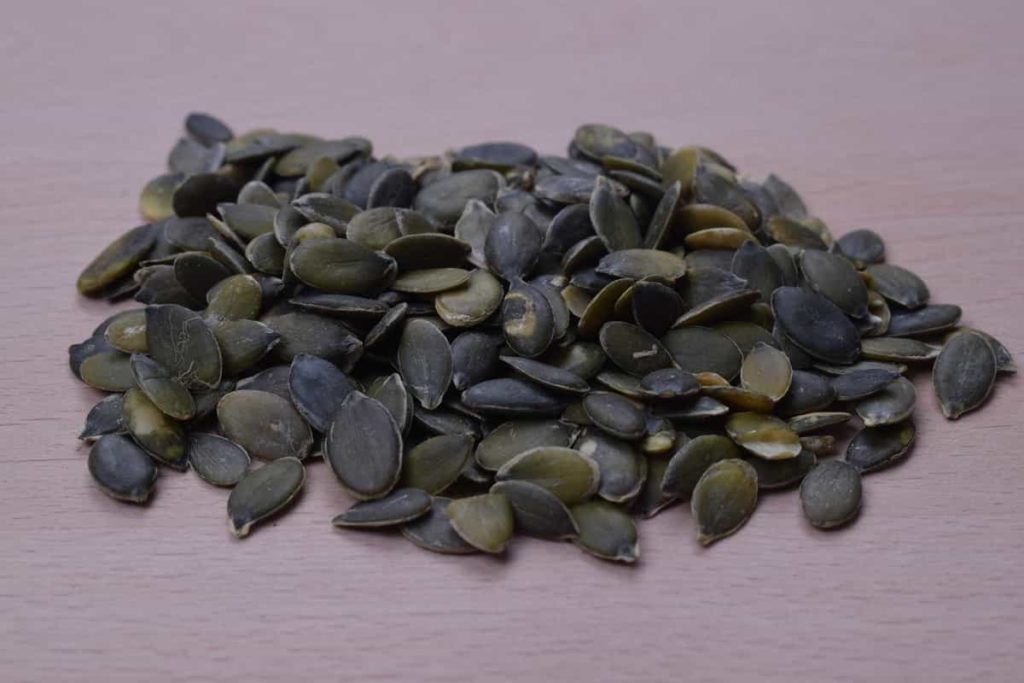
Why is seed treatment recommended in vegetable crops?
Seed treatment with Trichoderma or Pseudomonas protects crops from disease-causing microorganisms. Soak the cloth in warm water for 30 minutes or overnight before sowing. It will help speed up germination, faster growth, and healthier plants. Objectives of seed treatment are:
- Its main role is to protect the seeds from seed-borne diseases and insect attacks.
- Reviving a seed that has been dormant for a long time.
- Drought tolerance is encouraged.
- Early emergence is used to increase the seed germination percentage.
What vegetable seeds should be soaked before planting?
A short list of seeds that like soaking is Peas, Beans, Pumpkin and other Winter Squash, Chard, Beets, Fava Beans, and Cucumbers. Other media to large vegetable seeds with thick coats benefit from soaking. Soaking seeds give your plants a jump start in their life. Water both softens the seed coat and hydrates the interior of the seed. Once soaked, the seeds and the plants inside them use the moisture to grow and produce new growth.
Seeds are made up of baby plant parts surrounded by a seed coat. Although the internal parts of a monocot and dicot seed differ, the seed coat protects the baby plant until it is time to germinate. They contain the parts that grow and become food for the first leaves and stems of the plant, as well as the initial growth. By soaking the vegetable seeds, you are telling the seed that it is the right time to germinate and become a plant.
It is not easy to get all the seeds. Small seeds can clump together in water and be a nightmare to work with afterward. Larger seeds with a coarse seed exterior are ideal for soaking to initiate germination. Others that are wrinkled seeds, such as peas, do especially well after soaking. After soaking these seeds in water, they will plump up and be ready for direct sowing.
Which fungicide is used for vegetable seed treatment?
One of the most widely used systemic fungicides for managing fungal diseases is carbendazim, a methyl benzimidazole carbamate (MBC) group of fungicides. Conditions under which seed treatment is necessary;
1) Injured seeds: Any break in the seed coat provides the best opportunity for the fungus to enter the seed and kill it or awaken the resulting seed. The mechanical injury occurs during the process of combining and threshing operations or by falling from excessive heights. They can also be damaged by weather or improper storage.
2) Diseased seed: Seed can become infected with disease organisms even at harvest or during processing if processed on contaminated machinery or stored in contaminated containers or warehouses.
3) Unfavorable soil conditions: Seeds are sometimes planted in unfavorable conditions such as cold and wet or very dry soil. Such unfavorable soil conditions may be favorable for the growth and development of certain fungal spores that enable them to attack and damage the seeds.
4) Disease-free seeds: Seeds are always infected with disease organisms with no economic and severe economic consequences. Seed treatment provides good insurance against soil-borne diseases organisms and thus protects the weak seeds so that they can germinate and produce seedlings.
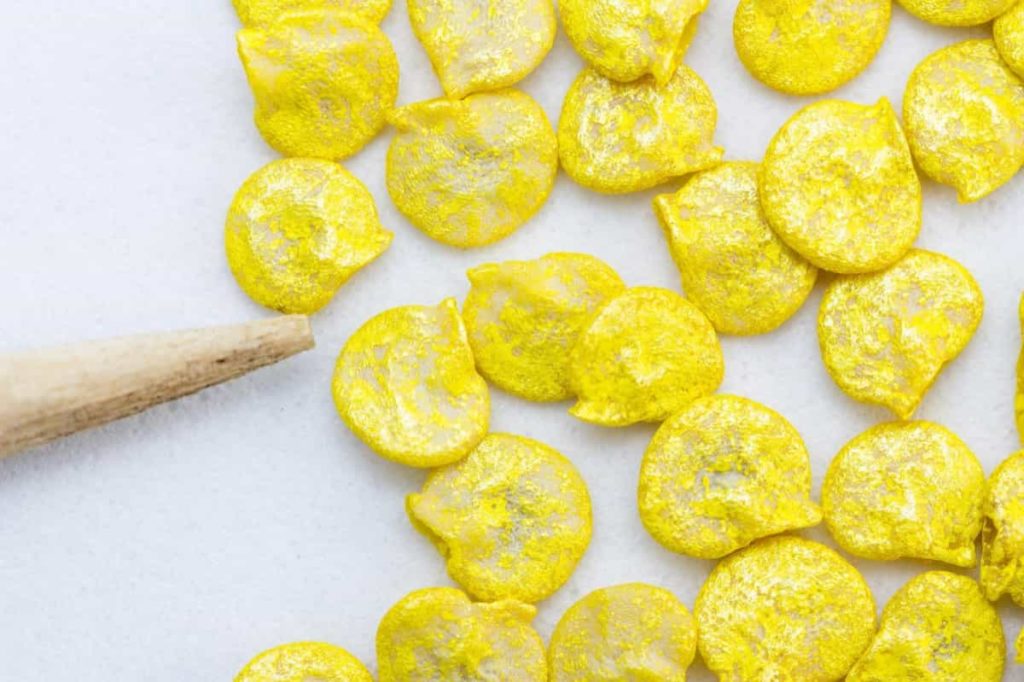
How do you treat seeds before planting?
Keep the seeds at a high temperature (40-42°C) for 1-2 days before sowing.
- Seed priming – Soak the seeds for 4-8 hours and dry again before sowing. The seeds should be sown within 1-2 days after priming.
- Pre-germination – Soak the seeds in water for 12-24 hours or until small shoots appear at the end of the seed.
Treating vegetable seeds before planting can help control seed-borne diseases. Control of these diseases is essential to prevent a reduction in crop yield. Suppliers or commercial nurseries treat some seeds before planting for transplanted crops or sale to growers for direct-sown crops. Vegetable seed can be treated to kill disease-causing organisms in or on the seed and then protect it when planted. Hot water treatment can kill many bacteria, fungi, and viruses in or on the seeds of many crops.
Fungicide dust and coatings can protect the seed from soil-borne organisms and are sometimes used to control organisms on or in the seed. For specific pest problems, insecticides may be used. Seed treatments are an important disease control tool but are most effective in combination with other disease control methods.
What is the best seed treatment?
It is a term that describes both the product and the process. Using specific products and techniques can improve the environment for seed, seedling, and young plant growth. The complexity of seed treatment ranges from basic dressing to coating and pelleting. Procedures;
1. Seed dressing: This is the common method of seed treatment. The seed is either prepared with a dry formulation or wet treated with a slurry or liquid formulation. Dressing can be applied to both farms and industries. Low-cost earthen pots can be used to mix the pesticides with the seed, or the seed can be spread on a polythene sheet, and the required amount of chemical can be sprinkled on the seed and mixed mechanically by the farmer.
2. Seed coating: A special coating is used with a formulation to adhere to the seed. On the industrial side, the coating requires advanced treatment technology.
3. Seed pelleting: The sophisticated seed treatment technology changes the seed’s physical shape to increase pelletibility and handling. Pelleting requires special application machinery and techniques and is the most expensive application.
What are the precautionary measures to follow the seed storage?
Storage structures should be properly maintained, cleaned, and disinfected. Structures should withstand the load of stored seeds and should not allow contact/exchange with outside, moist air, and structures should be house/farm best. If seeds are also to be treated with bacterial culture, the order in which seed treatment should be done is as follows
- Chemical treatment
- Insecticide and fungicide treatment
- Special treatment
Precautions in seed treatment
- Most of the products used in seed treatment are harmful to humans but can also be harmful to seeds. Extreme care is needed to ensure that treated seeds are never used as human or animal feed. To minimize this possibility, treated seeds should be labeled hazardous if used. The temptation to use unsold treated seed for human or animal consumption can be avoided if care is taken to treat only the quantity for which sale is assured.
- Care should also be taken to treat the seed at the correct feeding rate. Applying too much or too little material can be just as harmful as no treatment. Seed with very high moisture content is highly susceptible to injury when treated with some concentrated liquid products.
- Use appropriate recommended chemicals for the crop, pathogens, and diseases. Use the correct dose. Lower rates may not provide adequate control, while higher rates may damage the seed. Therefore, treating the seed at the correct feeding rate should also be taken. Applying too much or too little material can be just as harmful as no treatment.
- Most products used in seed treatments are harmful to humans but can also be harmful to seeds. Extreme care is needed to ensure that treated seeds are never used as human or animal feed.
- Regardless of the product, protective clothing, gloves, an approved chemical respirator, and goggles are recommended.
- To reduce this possibility, treated seeds should be labeled hazardous if used. The temptation to use unsold treated seed for human or animal consumption can be avoided if care is taken to treat only the quantity for which sale is assured.
- Some fungicidal and insecticidal seed treatment combinations may be toxic to the seed. Labels must be read carefully before mixing pesticides with fungicides.
- Treated seed should never be used as food. In addition, equipment used to transport grain to elevators should not be contaminated with treated grain.
- High moisture seed is very susceptible to injury when treated with concentrated liquid products. Never use expired chemicals for seed treatment.
- Treat the seed first with a fungicide, then an insecticide, and finally with rhizobium. This arrangement should be followed whenever recommended.
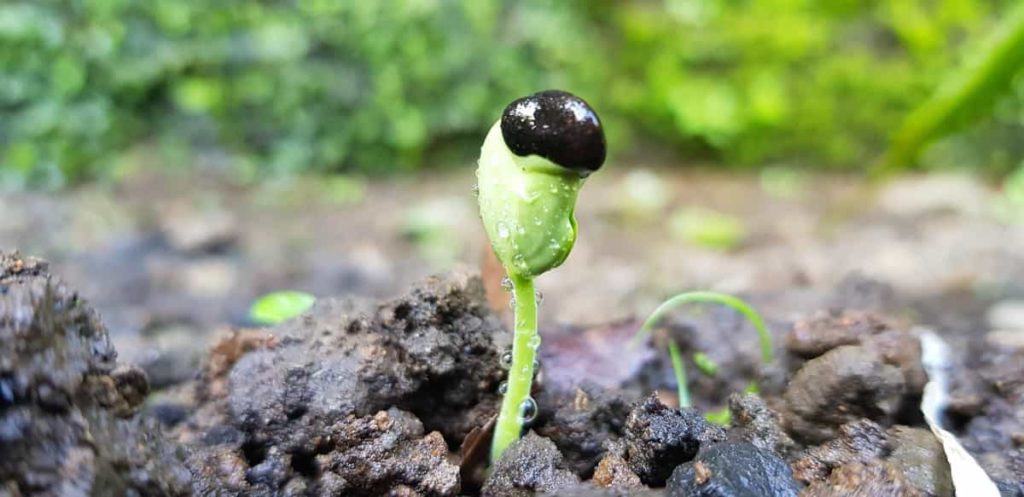
What are the mechanical methods of seed treatment?
- For large seed quantities, mechanical scarification can be achieved by pounding the seeds with sand or by rubbing the seeds on an abrasive slab.
- Both of these methods are simple and inexpensive, and successful.
What is the purpose of hot water treatment?
Hot water seed treatment is one method you can use to eliminate or reduce pathogens (especially bacterial pathogens) in vegetable seeds. Some commercial vegetable seed companies routinely use this method (as well as other stringent decontamination methods) to eliminate pathogens. Seed heat treatment is a non-chemical alternative to traditional chlorine treatment to eliminate seed-borne pathogens. Heat treatment has the added benefit of killing pathogens such as the tomato bacterial canker organism found within the seed coat.
Hot water treatments control many seed-borne diseases at temperatures hot enough to kill the organism but not hot enough to kill the seed. It should be done carefully and accurately. Hot water treatments may be harmful or impractical for seeds of Peas, Beans, Cucumbers, Lettuce, Sweet Corn, Beets, and some other crops. Recommended treatments may damage some hybrid varieties of Cabbage.
Hot water treatment of fresh seeds at the recommended temperature should not reduce germination. However, check the seed packet carefully to ensure the seed company has not already treated the seed. However, check the seed packet carefully to ensure the seed company has not already treated the seed.
Why is the proper treatment of vegetable seeds important?
Treatment of vegetable seeds before planting can help control seed-borne diseases. Control of these diseases is essential to prevent a reduction in crop yield. Suppliers or commercial nurseries treat some seeds before planting for transplanted crops or sale to growers for direct-sown crops. Any seed treatment aims to improve seed performance by one or more of the following methods:
- Elimination of seed-borne pathogens or protection against soil-borne pathogens,
- Handling improving ease and accuracy of planting (reducing stand gaps or the need to thin out plants, especially when mechanical planters are used) and
- Improve germination rates. The seed is treated with chemical fungicides in conventional production to reduce seed and seedling losses due to seed and soil-borne diseases.
Benefits of seed treatment;
- Protects germinating seeds and plants from soil and seed-borne pathogens/insects.
- Increase in seed germination.
- Early and uniform establishment and development.
- Enhances nodulation in the legume crop.
- Better than soil and plant application.
- Uniform crop stand, even under adverse conditions (low/high humidity)
How long do seed treatments last?
- Typically, seed treatment will last only 10 to 14 days after planting, with pesticide breakdown most rapid under warm, moist conditions. However, when applied at the highest labeled rate, some active ingredients can protect plants for a long time.
- Seed treatments are used to control a variety of pests on many crops. Seed treatments ensure uniform stand establishment while protecting against soil-borne pathogens and pests. They are considered so essential to corn stand establishment that almost all corn seed is treated.
- Seed treatments have successfully eradicated seed-borne pathogens. Seed treatments are used to suppress root rot in certain crops.
- Finally, some new systemic seed treatments may provide or substitute for traditional broadcast sprays of foliar fungicides or insecticides for some early-season plant diseases and pests.
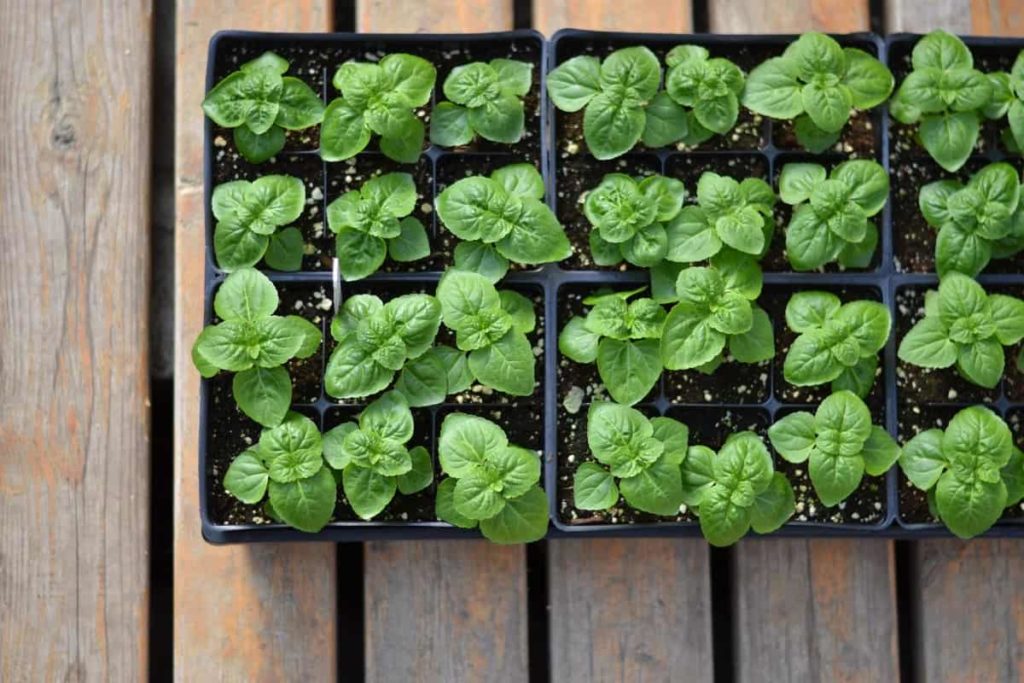
What is seed treatment in organic farming?
It is a broad category of treatment that includes hot water, biological and plant extracts, bleach disinfection, and biological (microbes). These seed treatments can improve seed and seedling health by eliminating seed-borne pathogens from seed or by protecting germinating seeds from attack by soil-borne pathogens.
Organic seed treatment process
Priming – The primed seed has absorbed enough water to dissolve germination inhibitors and activate the early germination stages. Primed seed is a suspended state of growth, so it grows faster and more evenly over a wider range of temperatures, reducing the chance of the plant standing too thick or too thin. Priming is usually combined with the pelleting process to protect the primed seed, which has a shorter shelf life.
Pelleting – A pelleting seed coat is a coating, usually of clay mixed with other roots that form the size of small, non-rounded seeds such as Lettuce, Carrots, and Onions. Pelleting results in easier and more accurate mechanical seeding, reducing gaps in the field and the need for laborious thinning.
Ideally, the pellet material is somewhat permeable to oxygen and absorbs water quickly so that the pellet disintegrates immediately after hydration. Conventional pelleting methods using synthetic inert materials are not approved for organic use. Still, several pelleting materials are on the market now approved for use on organic farms.
Conclusion
Seed treatments have played and continue to play an important role in improving the establishment of healthy crops. Chemical or biological seed treatments can provide significant protection from the germination stage, emergence from the soil, and during the first stage of the crop cycle to protect the seeds from soil-borne pathogens, seed-borne pests, and diseases and can provide important protection against insects.
A source: https://www.agrifarming.in/
